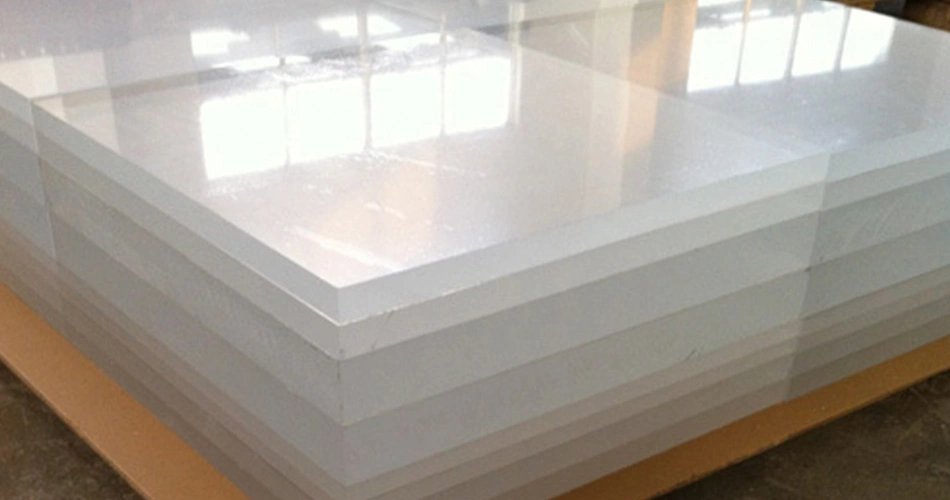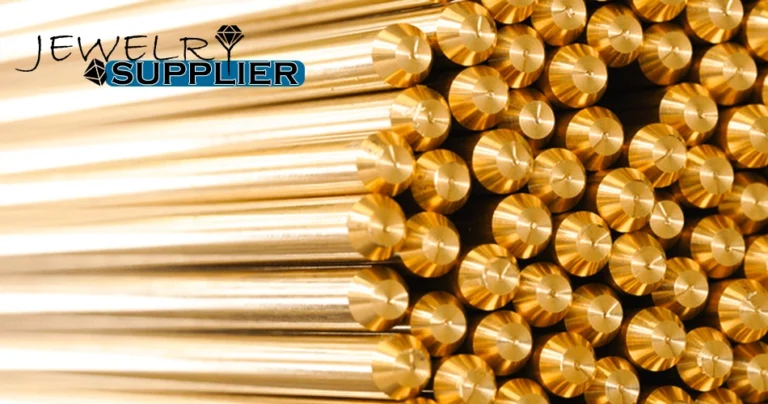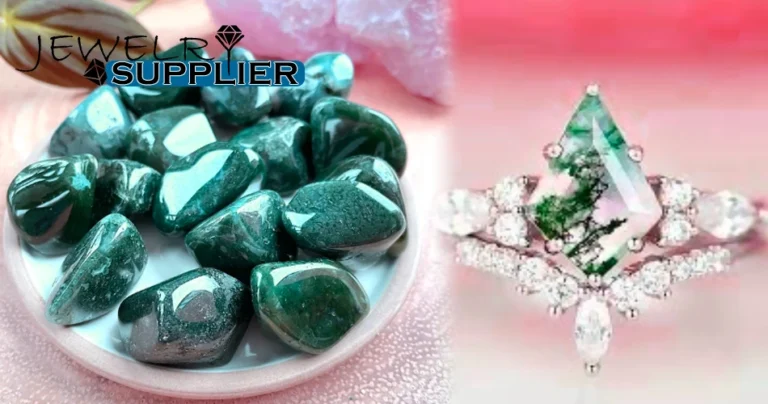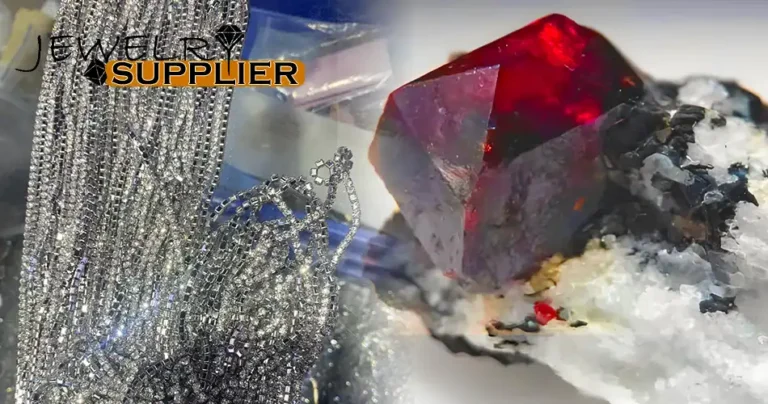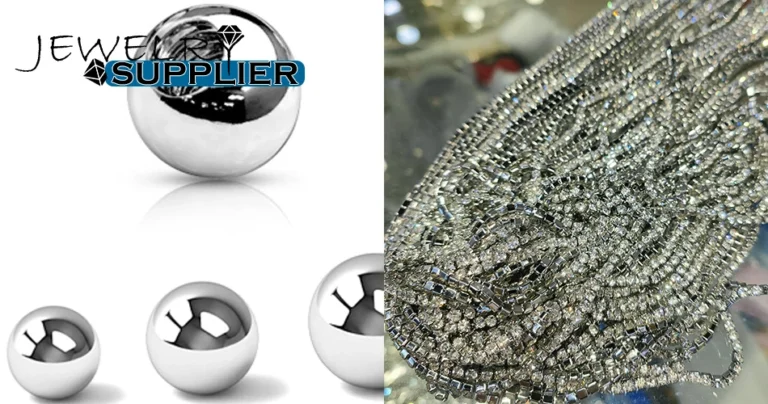Acrylic: The Stylish, Versatile Material
Acrylic, also known as polymethyl methacrylate (PMMA), is a transparent, chemically synthesized plastic material renowned for its lightweight nature and high optical clarity. Its exceptional light transmission and low density make acrylic an ideal choice for applications requiring high transparency and reduced weight. By incorporating various chemical additives, acrylic can achieve enhanced properties, making it a top performer in industries like construction, advertising, and medical devices.
When it comes to the jewelry supplier‘s world, acrylic has its own unique advantages. Unlike other high-performance materials, its production cost is relatively low, making it an accessible option for fashion-forward designs. Its inherent flexibility means that with the right heating and cooling processes, acrylic can be shaped into an array of jewelry styles, from bold statement pieces to delicate accents. This versatility has led to its increasing popularity in the jewelry market, where it’s loved for its vibrant colors, lightweight feel, and ability to mimic more precious materials at a fraction of the cost.
The Fundamental Composition of Acrylic
Acrylic, a chemically synthesized material, primarily consists of polymethyl methacrylate (PMMA). This material is created through a polymerization reaction of methyl methacrylate monomers. Each component in acrylic serves a distinct role in enhancing its performance and application potential. Let’s break down the key ingredients and their specific functions in acrylic:
1. Polymethyl Methacrylate (PMMA):
PMMA is the backbone of acrylic. It boasts high transparency, excellent weather resistance, and impressive processability, making it a staple in the production of durable and clear acrylic products.
2. Methyl Methacrylate Monomer (MMA):
This monomer is the precursor that, through polymerization, forms PMMA—the essential compound in acrylic. During this reaction, MMA molecules bond covalently, creating a long-chain polymer structure that gives acrylic its plastic properties.
3. UV Absorbers:
Adding UV absorbers to acrylic enhances its weathering resistance by protecting it from ultraviolet radiation. This prevents degradation and yellowing, ensuring acrylic remains vibrant and clear over time.
4. Pigments:
To achieve a variety of vibrant hues, acrylic is infused with pigments. This allows for the production of colorful acrylic sheets and decorative elements, expanding its use in fashion, art, and interior design.
5. Stabilizers:
Stabilizers are introduced to acrylic to increase its resistance to heat, light, and oxidative stress. These additives extend the lifespan of acrylic products by minimizing issues like discoloration, brittleness, or cracking during processing and prolonged use. Processing Techniques for Acrylic Jewelry
6. Flame Retardants:
Since acrylic is a flammable plastic, flame retardants are crucial for enhancing its fire safety profile. They increase the material’s limiting oxygen index (LOI), ensuring that when the flame source is removed, acrylic can self-extinguish. Flame retardants also lower the rate of heat release and smoke production, reducing toxic emissions and potential hazards in fire scenarios.
7. Antistatic Agents:
By incorporating antistatic agents, acrylic becomes less prone to static electricity buildup. This minimizes issues such as dust attraction or interference with electronic equipment, making acrylic more functional in various technical and cleanroom applications.
8. Scratch Resistance Agents:
Scratch resistance agents are added to acrylic to improve its surface durability. They reduce friction and make scratches less visible, preserving the polished appearance and extending the longevity of acrylic surfaces.
This intricate combination of components makes acrylic not just a versatile and stylish material, but also one that can be precisely tailored for specific uses, ensuring optimal performance in both functional and decorative applications.
Characteristics of Acrylic Material
Acrylic is a highly sought-after polymer material, widely utilized across various industries due to its exceptional properties. From architectural decorations to medical devices, from lighting equipment to transportation facilities, acrylic finds its way into numerous applications, blending functionality with a sophisticated appearance.
Data sheet of commonly used raw materials for jewelry
1. High Transparency:
Acrylic is renowned for its excellent light transmission, boasting up to 92% transparency—comparable to glass but at a significantly lighter weight. This high clarity makes acrylic the go-to material for manufacturing transparent products like display cases, light fixtures, and protective shields.
2. Lightweight Composition:
Compared to other materials, acrylic has a remarkably low density, weighing only half as much as glass. This lightweight nature makes it ideal for applications that require reduced weight without sacrificing strength, such as in skylights, signage, and portable display items.
3. High Impact Strength:
One of the standout features of acrylic is its superior impact resistance, which is several times stronger than regular glass. This makes acrylic suitable for high-safety applications like bullet-resistant windows and protective covers in machinery, where durability and resilience are crucial.
4. Vibrant Color Options:
Acrylic can be infused with a variety of pigments, allowing for a broad spectrum of rich and consistent colors. The pigments distribute evenly throughout the material, making it highly desirable for producing toys, artwork, and decorative items that require vivid, long-lasting color.
5. Anti-Aging Properties:
With the addition of stabilizers and other compounds, acrylic can maintain its physical properties and appearance even after long periods of exposure to environmental elements. This makes it suitable for applications requiring longevity, such as outdoor installations.
6. Smooth Surface & Premium Aesthetic:
Acrylic has a naturally smooth surface that is easy to polish, shape, and clean. This gives finished products a refined look, making it ideal for luxury displays, high-end furniture, and statement lighting pieces.
7. Recyclability:
One of the key advantages of acrylic is its recyclability, making it an eco-friendly choice. This capability not only helps reduce production costs but also aligns with sustainable development and environmental preservation goals.
8. Outstanding Weather Resistance:
Acrylic demonstrates excellent resistance to UV radiation, temperature fluctuations, and humidity, ensuring that it retains its appearance and integrity even in harsh outdoor conditions. As a result, acrylic is a preferred material for outdoor signage, advertisement panels, and weatherproof enclosures.
With these distinctive characteristics, acrylic continues to be a versatile and reliable material that combines performance, aesthetics, and environmental consciousness, making it a staple in both industrial and consumer products.
What Can Acrylic Be Made Into in the Jewelry Industry?
In the jewelry industry, Acrylic is a go-to material due to its unique physical and chemical properties, offering designers a diverse range of creative possibilities. The versatility and moldability of Acrylic open up limitless opportunities for creating striking and trend-setting jewelry pieces.
1. Colorful Jewelry Pieces:
Acrylic can be infused with various pigments to create jewelry in a wide range of colors, giving it a unique advantage in crafting vibrant accessories. Designers often use Acrylic to produce colorful bracelets, rings, earrings, and necklaces that cater to the market’s demand for personalized and fashion-forward jewelry.
2. Lightweight & Stylish Accessories:
With a density only half that of glass, Acrylic is perfect for creating lightweight jewelry that is comfortable to wear. Its feather-light nature allows for bold and elaborate designs without the burden of excess weight, enabling the creation of statement pieces that still feel easy and elegant to wear.
3. Transparent & Translucent Jewelry:
The high transparency of Acrylic makes it ideal for producing clear or translucent jewelry pieces, adding a crystalline effect to accessories. Whether it’s clear drop earrings or a translucent necklace, Acrylic perfectly captures the designer’s vision, adding a sophisticated, glass-like allure to the final product.
4. Three-Dimensional Jewelry Shapes:
Through thermal forming and other advanced processes, Acrylic can be shaped into a variety of three-dimensional forms, giving it a distinct edge for sculptural jewelry design. This characteristic makes it perfect for creating modern and artistic 3D jewelry, such as abstract pendants and sculpted brooches.
5. Ombre & Gradient Effect Jewelry:
Acrylic is particularly suited for special dyeing techniques like ombre, which produce jewelry with captivating gradient effects. This look is especially eye-catching in Acrylic, bringing a unique visual flair and artistic sensibility to pieces like pendants, rings, and hair accessories.
6. Personalized & Custom Jewelry:
The ease of cutting, carving, and shaping Acrylic provides ample room for personalized jewelry designs. Whether it’s engraving initials or forming intricate shapes, Acrylic allows for a high level of custom jewelry, meeting the consumer’s growing desire for unique and personalized jewelry that reflects their style.
7. Eco-Friendly & Affordable Jewelry:
Because Acrylic is recyclable, it’s an environmentally conscious option for those who prioritize sustainability. Additionally, Acrylic is relatively low-cost compared to other materials, making it a competitive choice in the jewelry market, offering consumers eco-friendly options that don’t break the bank.
8. DIY Acrylic Jewelry:
The ease of working with Acrylic makes it an excellent material for DIY jewelry enthusiasts. Consumers can create their own one-of-a-kind pieces, making the crafting process itself part of the fun and adding a unique, personal touch to each item.
9. Combining Acrylic with Metals and Gemstones:
Acrylic doesn’t have to stand alone—it can be paired with metals or gemstones to create more sophisticated and high-end looks. Combining Acrylic with materials like sterling silver, gold, or semi-precious stones results in jewelry that’s both modern and luxurious, appealing to a wider range of tastes and styles.
From lightweight designs to vivid colors, and from sleek transparency to unique customizations, Acrylic continues to inspire jewelry designers with its remarkable versatility, allowing for creations that are as bold as they are beautiful.

